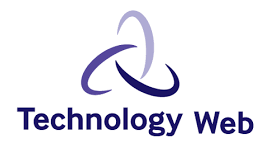Working From Home: A Challenge Like No Other
While many businesses adapt to remote work, one of the main concerns that business owners have is keeping a strong connection with their employees working from different locations. The modern workplace has its own set of challenges, especially in making sure that employees do not feel sidelined. Emotional distance is a product of physical distance, and it requires organizations to rethink how they relate with their employees. This article seeks to provide solutions for keeping a distributed workforce in unity.
Use of Technology to Foster Relationships
With technological advancement, it is easier than ever to bring people together from different locations. Platforms for video conferencing provide a glimpse of face-to-face meetings. It allows employees to engage in nonverbal communication such as smiling or nodding. Chat applications ensure that the flow of conversation is maintained throughout the day, which increases the sense of urgency. For organizations looking to see how employees engage without compromising their privacy, remote employee behavior analytics
tools from Controlio give those insights. These tools help ensure that a leader’s approach to her employees is personalized.
Creating Regular Touchpoints
Creating touchpoints builds trust and rapport. Weekly check-ins or virtual coffee breaks allow people to engage in sharing and catching up. These interactions do not need to be planned to the last detail. Sometimes even talking about weekend plans or casual shows can be as engaging as long meetings. Managers can help mitigate alienation when working apart by establishing regular, predictable interactions. Establishing these interactions helps to tell employees that every single voice is heard, which alleviates feelings of isolation.
Encouraging Open Dialogue
Transparency fosters alignment within a geographically dispersed group. Allowing groups or individuals to speak their minds through informal discussions or surveys increases the cultural fabric of trust. It is important to allow someone’s suggestion, for instance, suggesting a new initiative or giving critique, and actually conduct steps in responding. That kind of insulated communication fosters a cultural sense of inclusion that constantly reminds people that there is a bigger picture, a big system that they are always a part of. Along with proactive remote employee engagement strategies, this organism can thrive and become more creative.
Achieving Milestones Together
Hitting goals brings people together and enhances cooperation. While celebrating work anniversaries or completed projects, celebrating effort reinforcement keeps morale high. Digital events such as sending e-cards or organizing online parties give a personal touch to celebrations. Encouraging sharing of individual victories during team calls acts as a motivating factor for others. With a little bit of effort, celebrating becomes not just effective, but provides a sense of purpose, even if dispersed by miles.
Promoting Team Activities
Even if we all work remotely, there is no reason why fun should stop. Organizing fun virtual brainstorming sessions, movie nights, or trivia quizzes enhances energy levels within the group. These activities not only break the monotony of work, but provide an opportunity to bond on a human level. It could be as simple as everyone guessing each other’s favorite hobbies during a game. Such exercises create happy moments amongst people and strengthen bonds naturally.
Providing Growth Opportunities
Employees will appreciate it when you invest in professional development because it shows interest in their futures. Keeping them engaged through mentorship programs or online courses specifically designed for their positions will help them develop their skills further. When workers know there is career progression offered, it increases the likelihood that they want to stick with the company and avoid chasing other opportunities. Learning with regular feedback ensures that they know how to reach their goals and blend personal goals with the company’s smoothly.
Balancing Flexibility and Structure
Remote work is beneficial due to its freedom, but if there is too much freedom granted, it can lead to an increase in disengagement. Meeting certain expectations, such as attending meetings or answering emails within a certain timeframe, establishes independence while giving freedom. People tend to have personal lives, and so accommodating for flexible schedules is important too. Finding the right balance makes sure everyone stays productive while still meeting the overarching objectives.
Using Collaborative Platforms
Team communication goes beyond just simple verbal discussions, so having platforms that allow communication and collaboration goes a long way. The ability to share documents, use task boards, and edit in real time allows for fluid project execution. When everyone is able to see progress being made, it boosts their contribution level further. Employing a great task tracking tool like Controlio software also makes sure that project progress is not lost regardless of the team members’ time zones, which allows for seamless global collaboration.
Listening and Adapting
Every plan can never fully satisfy all teams in all cases from the very beginning. That is why feedback on what is going well and what isn’t provides leaders with the information they need to refine their methods. Some might like written reports better than video meetings, or maybe everybody has heard enough from the head office and a monthly newsletter does the job. Being able to accommodate these practices demonstrates the ability to change, which builds loyalty and trust.
Conclusion: Building a Thriving Remote Culture
There is no doubt that enhancing the engagement of a remote workforce is complex and that requires more planned efforts. Companies that value having a dedicated community combine various forms of technology, regular real-life interactions, and a genuine interest in the employee’s staff’s growth both at a personal and professional level. The goal is to go beyond simulating an office environment to build a whole new experience that fits remote working. With the right blend of willingness and effort, distance ceases from being a divisive factor to just a detail.





